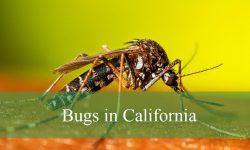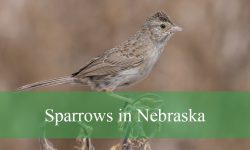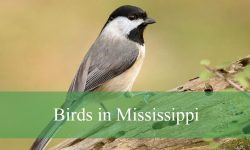You probably have heard that female black widow spiders are the most dangerous species in the world to humans. But black widow bites are quite rare since they only happen when you provoke them.
It can be confusing to distinguish some black spiders from black widows. Some are harmless and others are considered venomous. We wrote this guide to share descriptions and pictures of spiders that look like black widows .
How to Identify Black Widow Spiders
Black widow spiders are numerous in North America though it can be challenging to tell the difference between them and other black spiders.
Examples of black widow species are the Southern black widow, Western black widow, and Northern black widow. The female species are more dangerous than their male counterparts.
There are many ways to identify black widow spiders if you spotted them near your home. Here are the distinguishing physical features:
Black Widow Bites
Female black widow bites can cause severe side effects in your body since they contain dangerous venom. Different people might develop different symptoms when bitten by black widows.
Dizziness, nausea, headache, itching, rash, and eye-watering are the common symptoms of black widow bites. Chest pains, breathing problems, and sweating are severe symptoms.
We recommend seeking immediate medical attention if you have been bitten by this spider. You can request someone nearby to capture the spider and take it to the hospital.
Red Hourglass Marking
Black widow spiders have 1-2 red triangles on the bottom. These marks on the spiders are only visible when they hanging from a web.
The red triangle marks usually connect to form an hourglass shape. Some species have black stripes separating the red hourglass markings.
Shiny Black Bodies for Females
Female black widows have dark shiny hairless bodies. These jet-black spiders may have brown or purple tinges on their bodies for easy identification.
Tan Bodies for Males and Juveniles
Juvenile and male spiders have splotchy white abdomens with reddish-brown legs. Male spiders turn into white and tan patterns at maturity. Male black widows are quite rare since they have a shorter lifespan than females.
Where to Encounter Black Widows
Black widows are often seen in an area with sparse vegetation, piles of debris, and hollow logs or indoors in the firewood. These nocturnal spiders hide during the day and prowl for food on their webs at night.
Black Widow Eggs and Spiderlings
Female black widows lay their eggs into small sacs that take about 14 days to hatch. The spiderlings stay in the small sac until the first molting is over.
These female spiders are more protective after laying their eggs and can bite if provoked. Hire a professional exterminator if your house is infested with these spiders.
Spiders That Look Like Black Widows
True black widows are found throughout North America. Here is a list of spiders that look like black widows in Texas:
Black House Spider
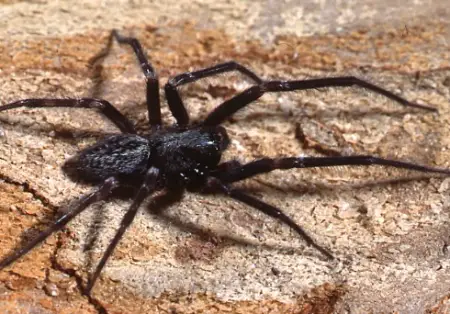
Black house spiders have a dark brown to black head space and legs with a charcoal gray abdomen. The velvet hairs covering the charcoal gray abdomen are distinctive features.
Female blackhouse spiders can grow up to 18mm long and are venomous. These common black house spiders are larger than black widows without red hourglass markings.
The bites from blackhouse spiders are harmless and quite rare, although you might experience localized pain.
Domestic House Spider

These spiders have flattened head space and elongated bodies. They can grow up to 11.5mm long and are smaller than black widows.
The dark orange to beige or brown body with striped legs is the distinctive feature. Other prominent features are the two dull black stripes on their heads.
Mature domestic house spiders have brown, beige, and gray mottling with a chevron pattern on their abdomens. They are smaller in size compared to the black widow spiders.
South American Black Widow
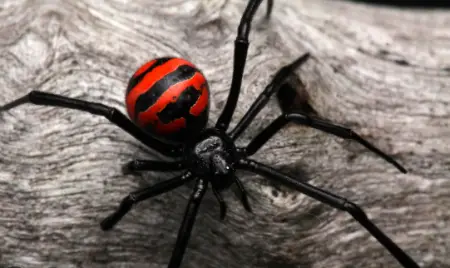
These spiders are also called Brazilian black widows. They have black and red markings on their bodies and legs. Besides that, South American black widows are more significant than their counterparts.
Female species can grow up to 17mm long with black and red marks on their bodies and legs for easy identification. Male species have white or brown color on their bodies.
Brazilian black widows are nocturnal and non-aggressive to humans. Female South American black widows are aggressive when protecting their eggs.
European Black Widow
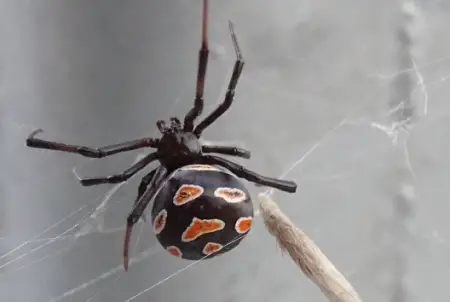
European black widow spiders have thirteen spots on their dorsal abdomen. The spots can be red, orange, or yellow depending on the species.
Bites from these spiders are dangerous although it is rare. We recommend seeking immediate medical attention to prevent the symptoms’ severity.
European black widows are also called Mediterranean black widows. The female species are dangerous to humans or pets and can grow up to 15mm long.
Katipo Black Widow
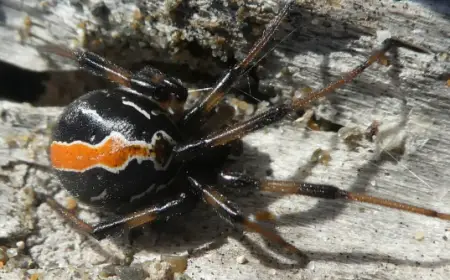
The medium-sized spider has an orange stripe with a white border on its back. The red patch that looks like a red hourglass can be confusing.
Female katipo spiders have large velvet black bulb-shaped abdomens that look silky in appearance. Some species have brown with yellow or dull stripes and cream-colored spots.
Redback Spider
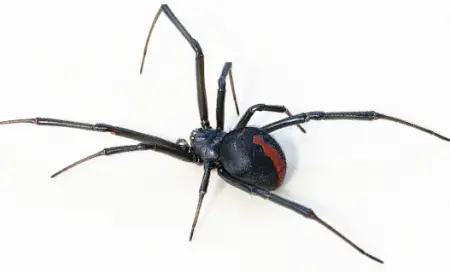
These spiders have slender legs with longer front pairs and one-centimeter body length. The round abdomen is brown or deep black with red or orange stripes on the dorsal area.
An hourglass shape on the underside is the feature that confuses many people. Female species have plain black abdomens without markings.
Spiderlings have gray abdomens with dark spots and males light brown with white markings on the upper surface. A pale hourglass mark on the underside is a distinctive feature.
White-Spotted False Widow
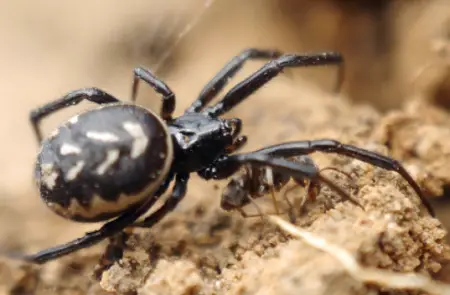
It is a common spider that loves spinning webs in undisturbed areas at home and garden. These spiders can easily be confused with the female black widows due to their close similarities.
The bodies of these cupboard spiders range from red plum and satin black to pale brown. They also have bulb-shaped abdomens with white, beige, or orange markings.
These spiders that look like black widows without red hourglass are harmless and come in a variety of sizes. The sandy brown to the black body is the distinctive feature.
Rabbit Hutch Spiders
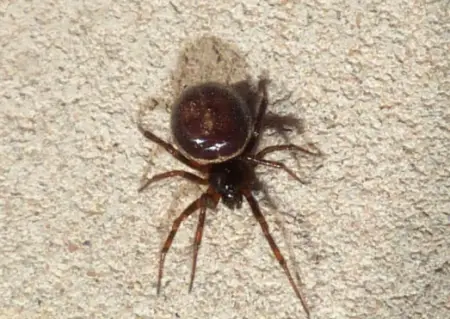
These spiders that look like black widows in Texas are often seen in the sheds and basements of homes. However, they are not dangerous to humans and pets.
The bulb-shaped abdomen is brown with a broken line down the center. You can also spot another broken line on the anterior part of the abdomen.
The vibrant infinity pattern on the underside is the distinguishing feature of the black widow spiders. These spiders can grow up to 7mm in body length.
Boreal Combfoot Spider
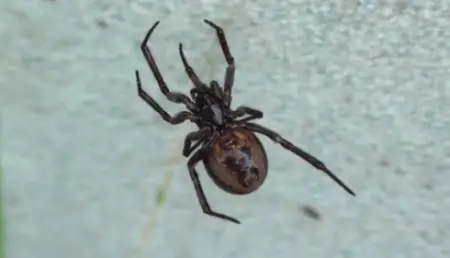
Boreal comb foot spiders have red to the brown abdomen with T-shaped markings on the anterior. The top abdomen surface is darker than the underside.
These spiders are often found in the East of the Rocky Mountains. But they have started moving to southwards. They prefer living under the stones, between rock crevices, and outbuildings.
They are smaller than black widows since they can grow up to 7mm long. The lack of a red hourglass on the underside makes it easier to the identification.
Red Widow Spider
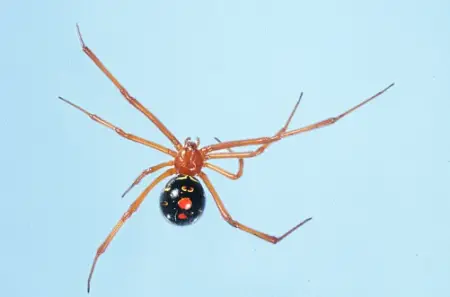
These spiders are native to Central and Southern Florida due to the presence of sand dunes habitat. They have black abdomen with red or orange head space and yellow rings.
The rows of red spots outlined by yellow rings are distinctive features. The two small red marks on the underside replace the red hourglass.
These red widow spiders are dangerous though their bites are rare. These spider species rarely come into contact with humans or pets.
False Black Widow Spider
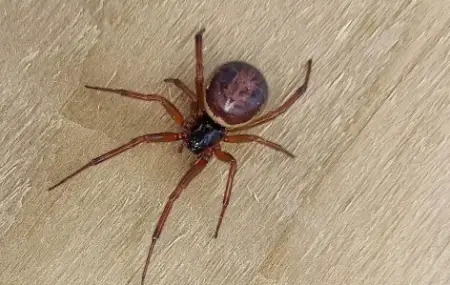
How to identify a false widow spider can be challenging for many people. But these false black widow spiders have brown to black or purple large bulb-shaped abdomens.
They are also called cupboard spiders, dark comb-footed spiders, or brown house spiders in Australia. The bites from these spiders can cause severe localized pain and itching.
Noble False Widow
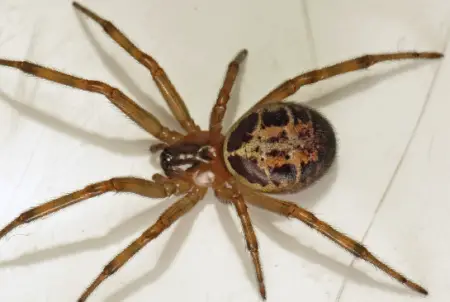
It is the largest false widow spider in the world and is often found near homes or gardens. It has a dark brown color on the front of its body and legs.
The bulb-shaped abdomen comes in cream with dark brown or a few markings. The bites from these spiders are rare since they are non-aggressive.
Triangulate Cobweb Spider
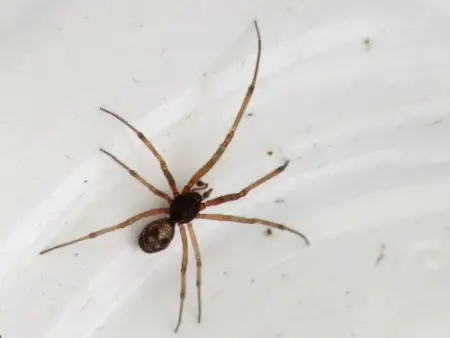
It is also called triangulate bud spider. It is a common house spider that hides in the darkest corners of outbuildings.
These spider species have poor eyesight and rely on their sense of touch or feeling vibrations to catch prey. They are smaller and non-aggressive towards humans or pets.
Triangulate cobweb spiders have a brown to the orange head region and yellow legs. The cream bulb-shaped abdomen has purple to brown zigzag patterns.
Brown Widow Spider
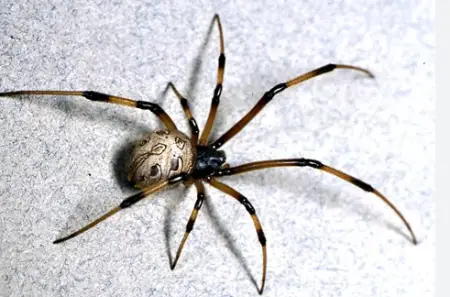
It is a brown spider that looks like a black widow but is not dangerous. It is also called brown button spider, grey widow, brown black widow, house button spider, or geometric button spider.
These spiders have black and white patterns on the abdomen sides and orange to the yellow hourglass shapes. They are smaller and lighter in color than black widow spiders.
Lace Web Spider
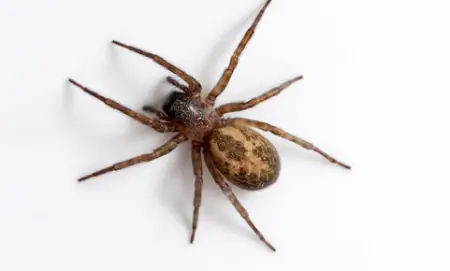
It is also called funnel weaver and is often seen in homes during autumn. These brown medium-sized spiders have yellow markings on their abdomens.
Males are smaller and longer than their female counterparts. Besides that, male spiders usually leave their webs in search of females for mating purposes.
My Final Thoughts
Black widow spiders have a shiny black appearance without dots, spots, or stripes. The female black widow spiders have a red hourglass shape on their underside.
While many spiders look like black widows with white marks, the lack of bright red hourglass on their undersides is the distinguishing feature.
If you have been bitten by a spider, seek immediate medical help since some species contain venom that can be fatal. Ask someone to take the picture of the spider and take it to the doctor.
People Who Read This Also Read:


